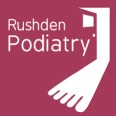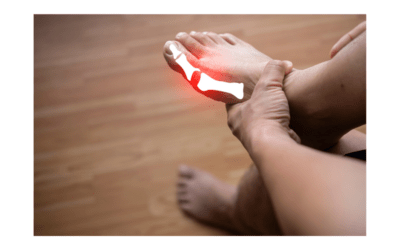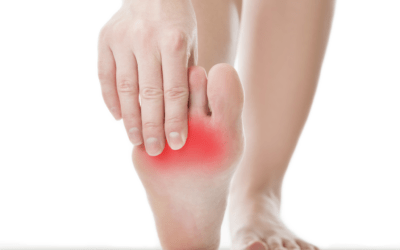By Dr Mike Curran
The novel Jane Eyre was published in 1847. Within the text Jane describes how she and other students suffered through winters at Lowood school for orphan girls.
“Our clothing was insufficient to protect us from severe cold: we had no boots, the snow got into our shoes and melted there: our feet were covered in chilblains.”
Chilblains are not as common as they used to be in 1847 and that may be associated with warmer buildings and better footwear. However, as we reduce the warmth in our homes with the UK energy crisis, is there a possibility we may see more of them?
What Are Chilblains?
They are small, red, and itchy swellings on the skin (commonly on the toes), which occur as an abnormal response to cold temperatures.
Why Do We Get them?
Chilblains happen when the tiny blood vessels under the skin narrow when the skin becomes cold. The blood supply to areas of skin may then become very slow. As the skin re-warms there is some leakage of fluid from the blood vessels into the tissues (due to the sudden change in temperature), and this causes areas of inflammation and swelling, which we refer to as chilblains.
What Causes Chilblains?
Anyone who is exposed to cold (and then suddenly warm) temperatures is at some risk of getting chilblains, perhaps putting out the washing on a cold day, going from a warm house to a cold garden and back again may result in chilblains, especially if the person is wearing poorly insulated footwear.
However, some people may be more at risk than others:
- People with poor circulation.
- People with a family history of chilblains.
- People who live in damp, cold conditions.
- People with certain conditions, such as lupus or Raynaud’s syndrome.
- People who smoke (nicotine causes blood vessels to constrict)
Who is Affected?
Chilblains can occur at any age, but children and older adults tend to be most affected. Women tend to be more affected than men too.
Prevention.
Prevention is better than cure for chilblains so consider the following;
Keep warm, especially in colder weather. The principal cause of chilblains is cold temperatures. Do not toast your feet in front of a fire though!
Take good care of your feet and wear well insulated footwear or consider insoles that provide insulation.
Keep active as exercise helps your circulation, and is great for your overall health.
Stop smoking as nicotine in cigarettes causes blood vessels to constrict, which can make chilblains worse.
What happens if you get them?
Chilblains often get better on their own after a week or two without treatment.
It may help to use a soothing lotion, such as calamine or witch hazel, to relieve itching. Your pharmacist may also be able to recommend a suitable product.
If they become open (ulcers) or infected, seek the advice of your Podiatrist or GP.
If your chilblains are severe and keep returning, speak to your Podiatrist. They may recommend asking your GP to prescribe a daily tablet or capsule of a medication called nifedipine to relax your blood vessels.
If you would like to talk to one of the team about how we can help with chilblain, call us on 01933 594444 or to book an appointment with one of our Podiatrists click here https://rushdenpodiatry.co.uk/booking/



